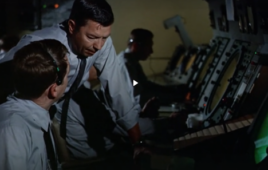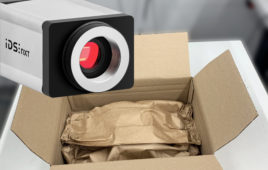When bombs recently went off in New York and New Jersey, notifications popped up on the mobile devices of residents across the region. But according to N.Y. Senator Charles Schumer there was one important thing missing: a picture of the suspect authorities were asking citizens to help them find.
Now, Schumer is asking the FCC to close what he called a “gaping loophole” in the existing Wireless Emergency Alert System (WEA).
In a Sunday press release, Schumer urged the FCC to redouble its efforts to modernize the system to include modern messaging features like multimedia images and links.
Implemented under the Warning, Alert and Response Network (WARN) Act passed by congress, the WEA system delivers three types of messages to wireless devices: alerts issued by the president; alerts related to imminent threats to life or safety and Amber Alerts. Unlike traditional SMS text messages, the WEA notifications are delivered using a separate technology that ensures the alerts won’t be bogged down in congested network areas.
However, the current system is also different from modern text messaging in that it carries a 90-character limit and does not allow an option to attach pictures or links. Schumer said the system’s current setup is “stuck in the 90s” and said the WEA system needs to be updated to become “as smart as our phones.”
“When it comes to a terrorist or other very dangerous criminal on the run, a picture not only is worth a thousand words, it could save a thousand lives if the right person sees it,” Schumer said. “We are in an age where sending a photo or video via text is commonplace, yet when it comes to the nation’s Wireless Emergency Alert System our texting capabilities are limited. Last week’s terror threat here in New York highlighted a major weakness in our Wireless Emergency Alert System when millions of New Yorkers were left with no other option but to ‘Google’ for more information. To maximize safety, the FCC should quickly update our emergency alert system by increasing the number of maximum characters permitted and allowing for pictures to be attached.”
Schumer’s call to act was seconded by New York City Police Commissioner James O’Neil, who asked that the commission include multilingual capabilities in its WEA upgrade. The New York City Emergency Management Department and New York City Mayor Bill de Blasio, as well as emergency management officials from San Francisco, Los Angeles, Houston, NOAA and the National Weather Service, also reached out in the wake of the bombings asking the FCC to move ahead with an upgrade of the system.
Back in November 2015, the FCC moved to modernize the system, proposing rules to increase the length of WEA messages to 360 characters; enable embedded phone numbers and URLs; create a class of WEA alerts for community public safety advisories; require wireless providers to provide more targeted delivery of messages; and make system-related testing and training easier for state and local authorities.
But the FCC has yet to pass these rules. And not everyone is convinced the changes should go ahead posthaste.
Verizon in April expressed support for parts of the FCC’s plan, but noted several feasibility limitations. The carrier, for example said longer message would work fine on LTE devices, but would need to be delivered as a series of four messages on older handsets. Verizon also said further geographical targeting will “largely depend on the capabilities and interest of handset manufacturers.”
Multimedia messaging, though, is out, the carrier said. According to Verizon, such a feature “is not feasible” on the current WEA system and would require further study to see if it would be possible on LTE or later generation networks.
CTIA this week also pushed back on the WEA upgrade, urging the FCC to proceed with caution. The industry group noted the use of embedded URLs across all WEA alert categories could cause customer confusion and adversely impact wireless networks by causing traffic spikes in data usage. The group’s comments echoed a similar statement from AT&T in March, when it said the use of embedded links could exacerbate traffic if a lot of people are accessing the URL at the same time in the same area.
Filed Under: Industry regulations




